Feature Story
Health Center Today, December 11, 2009
Public Safety Overhaul Nearly Complete
By Chris DeFrancesco
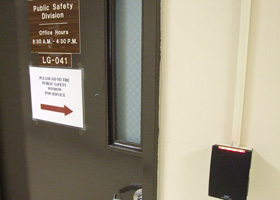
New badge readers, such as the one outside the Public Safety Division office, will be the new gatekeepers to secure areas throughout the campus. Access will require a current ID badge and corresponding profile updated to reflect the cardholder has authorization to be in a given area.
For the first time since the UConn Health Center opened, the Department of Public Safety is undergoing a major renovation.
The physical plant portion of the plans is five years in the making, and should be complete by the summer. Most noticeable will be the five-dozen emergency phones throughout the campus and additional security cameras monitoring the parking lots and other areas, both interior and exterior.
"Daytime, nighttime we can monitor what’s occurring and see what’s happening here on campus," says assistant police Chief Ray Bouchard. "But I also think if people know the capabilities of the system, they’ll feel more comfortable about their own personal safety."
"If there’s an emergency and someone hits the blue phone, there are cameras that automatically train on the phone," says Chief Peter Agnesi.
The overhaul includes a new security system that will know who’s allowed access to which areas, and will require a valid ID badge to bypass secured areas.
"If someone attempts to enter a space, it will tell us when someone did," Bouchard says. "If they’re not authorized, it wouldn’t allow that, but we’d know when that occurs. It’s important to know who entered at a certain time, or who tried to."
Making this work will require entering a profile into a database to correspond with every active ID badge. That profile will include which areas are accessible by the holder of that badge, and even pinpoint specific dates and times for that access if needed.
"What’s also going to occur because of our security enhancements is, our officers don’t need to spend a great deal of time walking the building at night locking and unlocking doors, so they’ll be more visible and have more of a presence," Bouchard says.
Public safety officials are meeting with managers and department heads to determine which areas their employees need access to, and at what times.
"We certainly would ask for their patience and understanding," Agnesi says. "We can’t lose sight of the fact that it’s being done for everyone’s safety and security."
They also will need cooperation; everyone will need a blue ID badge that’s current. The old white or green badges won’t grant access to any secured area, and neither will blue ones if the expiration date under the photo has passed. To arrange for a new ID badge, call x2511.
After-hours access to labs on college campuses "is a problem that’s nationwide," Bouchard says. "It’s not simply our problem."
"And it’s been exacerbated because of what occurred at Yale," Agnesi says, referring to the September 2009 murder of graduate student Annie Le. "Having a card access system made [the investigators’] job much easier. They were able to go into the system and track the suspect the whole way. You are better able to control who goes where."
The $5.5 public safety overhaul includes an upgraded radio communications system, a new dispatch center with computer-aided dispatch technology, electronic booking capability, a high-tech fingerprint machine, and a holding cell, enabling campus police to hold people overnight if necessary.
"This project doesn’t end with the construction in May 2010," Bouchard says. "It will be fluid and dynamic. As we progress, we’re going to see that we’ll need to make some changes."
In the coming months the Health Center will implement a campus alert notification system.
"All employees, volunteers and students will be asked to register their cell phones, where they’ll receive a text message that will direct them to the Web site in the event of a critical incident: a life-and-death situation, such as an active shooter on campus, an abduction or hostage situation," Bouchard says.
Health Center police also recently acquired patrol rifles to have available for the most dire on-campus situations.
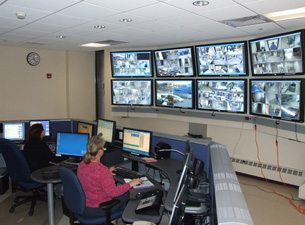
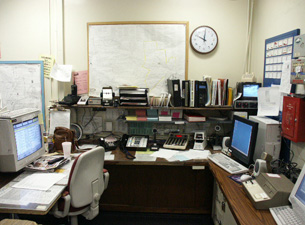
Telecommunication dispatchers Gail Garrard (left) and Diane Guerrara can monitor video from security cameras throughout the campus in the new public safety dispatch center, which is also equipped with a new radio communications system and computer-aided dispatch technology. Pictured to the right is the old dispatch center.
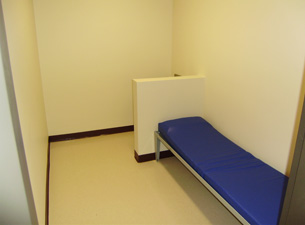
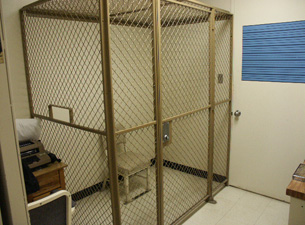
The new holding cell (left) replaces the cage (right), enabling campus police to hold a suspect overnight when necessary.


